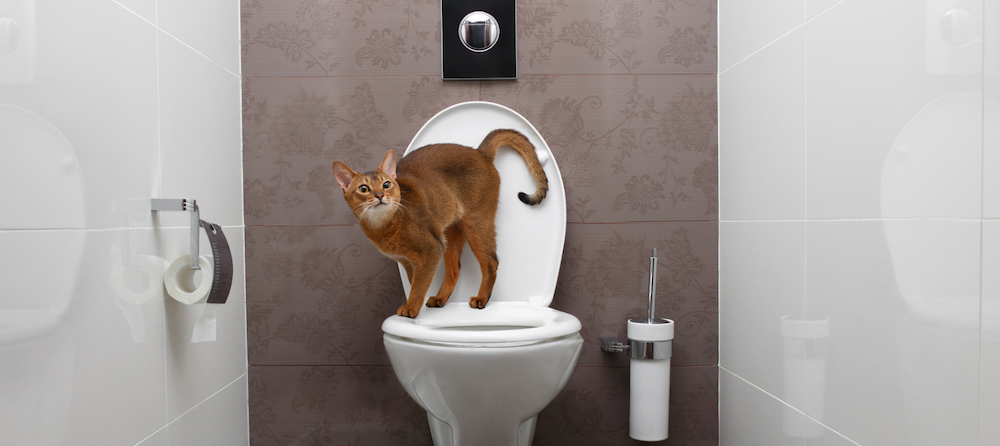Avoid Flush Cat Poop Down Your Toilet - Maintain Your Home's Plumbing Integrity
Avoid Flush Cat Poop Down Your Toilet - Maintain Your Home's Plumbing Integrity
Blog Article
We've noticed this article involving How to Dispose of Cat Poop and Litter Without Plastic Bags listed below on the web and reckoned it made sense to relate it with you over here.

Intro
As cat owners, it's necessary to bear in mind just how we dispose of our feline pals' waste. While it may seem practical to purge cat poop down the toilet, this practice can have harmful effects for both the setting and human wellness.
Alternatives to Flushing
The good news is, there are safer and a lot more liable methods to deal with feline poop. Consider the complying with options:
1. Scoop and Dispose in Trash
One of the most common method of throwing away feline poop is to scoop it into an eco-friendly bag and toss it in the trash. Make certain to utilize a dedicated litter scoop and deal with the waste immediately.
2. Usage Biodegradable Litter
Select eco-friendly feline trash made from materials such as corn or wheat. These litters are environmentally friendly and can be safely gotten rid of in the garbage.
3. Bury in the Yard
If you have a yard, consider hiding pet cat waste in a designated location away from veggie gardens and water sources. Make sure to dig deep enough to stop contamination of groundwater.
4. Mount a Pet Waste Disposal System
Purchase an animal garbage disposal system especially developed for cat waste. These systems make use of enzymes to break down the waste, decreasing smell and environmental impact.
Wellness Risks
In addition to ecological concerns, purging pet cat waste can likewise posture health and wellness threats to humans. Feline feces might contain Toxoplasma gondii, a parasite that can create toxoplasmosis-- a potentially severe health problem, specifically for pregnant females and people with damaged body immune systems.
Environmental Impact
Flushing cat poop presents dangerous virus and parasites into the supply of water, presenting a considerable risk to marine environments. These impurities can adversely impact marine life and compromise water quality.
Conclusion
Accountable animal ownership extends beyond supplying food and shelter-- it also entails correct waste administration. By refraining from purging pet cat poop down the commode and going with different disposal approaches, we can decrease our ecological footprint and protect human wellness.
Why Can’t I Flush Cat Poop?
It Spreads a Parasite
Cats are frequently infected with a parasite called toxoplasma gondii. The parasite causes an infection called toxoplasmosis. It is usually harmless to cats. The parasite only uses cat poop as a host for its eggs. Otherwise, the cat’s immune system usually keeps the infection at low enough levels to maintain its own health. But it does not stop the develop of eggs. These eggs are tiny and surprisingly tough. They may survive for a year before they begin to grow. But that’s the problem.
Our wastewater system is not designed to deal with toxoplasmosis eggs. Instead, most eggs will flush from your toilet into sewers and wastewater management plants. After the sewage is treated for many other harmful things in it, it is typically released into local rivers, lakes, or oceans. Here, the toxoplasmosis eggs can find new hosts, including starfish, crabs, otters, and many other wildlife. For many, this is a significant risk to their health. Toxoplasmosis can also end up infecting water sources that are important for agriculture, which means our deer, pigs, and sheep can get infected too.
Is There Risk to Humans?
There can be a risk to human life from flushing cat poop down the toilet. If you do so, the parasites from your cat’s poop can end up in shellfish, game animals, or livestock. If this meat is then served raw or undercooked, the people who eat it can get sick.
In fact, according to the CDC, 40 million people in the United States are infected with toxoplasma gondii. They get it from exposure to infected seafood, or from some kind of cat poop contamination, like drinking from a stream that is contaminated or touching anything that has come into contact with cat poop. That includes just cleaning a cat litter box.
Most people who get infected with these parasites will not develop any symptoms. However, for pregnant women or for those with compromised immune systems, the parasite can cause severe health problems.
How to Handle Cat Poop
The best way to handle cat poop is actually to clean the box more often. The eggs that the parasite sheds will not become active until one to five days after the cat poops. That means that if you clean daily, you’re much less likely to come into direct contact with infectious eggs.
That said, always dispose of cat poop in the garbage and not down the toilet. Wash your hands before and after you clean the litter box, and bring the bag of poop right outside to your garbage bins.
https://trenchlesssolutionsusa.com/why-cant-i-flush-cat-poop/

Do you enjoy reading up on How to Dispose of Cat Poop and Litter Without Plastic Bags? Write a short review down the page. We would be pleased to hear your thinking about this review. Hoping to see you back again before long. Enjoyed reading our write up? Please share it. Let other people discover it. Thanks so much for going through it.
Book Service Report this page